 All Our Tours
All Our Tours
Written by: Alice Le
Updated date:05/09/2025
Hello, I’m Alice. I’m a passionate travel expert with years of experience exploring Vietnam, Laos, Cambodia, and Thailand. My journeys through these countries have given me a deep appreciation of their landscapes, traditions, and cultures, which I now share through authentic insights and tailored recommendations. With this expertise, I can design trips that perfectly match your expectations and create truly unforgettable journeys. I’m here to guide you toward unique experiences, crafted just for you.
Contents
Nestled in the highlands of southern Laos, the Bolaven Plateau is a land of towering waterfalls, fertile coffee plantations, and vibrant ethnic cultures. Far from the crowded tourist hubs, this cool-climate region invites travelers to slow down, breathe in the fresh mountain air, and immerse themselves in the rhythms of rural life. This plateau will bring tourists to a destination that blends adventure, culture, and nature in perfect harmony.

The Bolaven plateau: a rural life far from tourism
Hidden away in the southern reaches of Laos, the Bolaven Plateau is a captivating blend of untouched landscapes, majestic waterfalls, and fertile coffee-growing highlands. This region, sitting between 800 and 1,350 meters above sea level with a temperate climate that stays refreshingly cool throughout the year. It’s an ideal escape from the heat of the lowlands and a rare treat in tropical Southeast Asia.
The Bolaven Plateau is more than just a scenic destination; it is a way of life. Far removed from the fast pace and vibrantness of tourist-heavy cities, the plateau offers a peaceful retreat where the days are slow, the air smells of fresh earth and roasted coffee, and the nights are lit by countless stars. Its remote location and minimal infrastructure mean that tourists can enjoy life without rush, far from the noise of the modern world.
Life in this plateau revolves around nature, tourists coming here can see fields of coffee and tea stretch across the hillsides, jungle trails lead to hidden waterfalls, and traditional stilt houses dot the landscape. Everything will make tourists feel chill and fresh. In addition, ethnic minority communities, such as the Alak, Katu, and Ta Oy, maintain their cultural heritage through distinctive clothing, architecture, and customs. This makes the region not only a place of natural beauty but also a living museum of Laotian traditions.
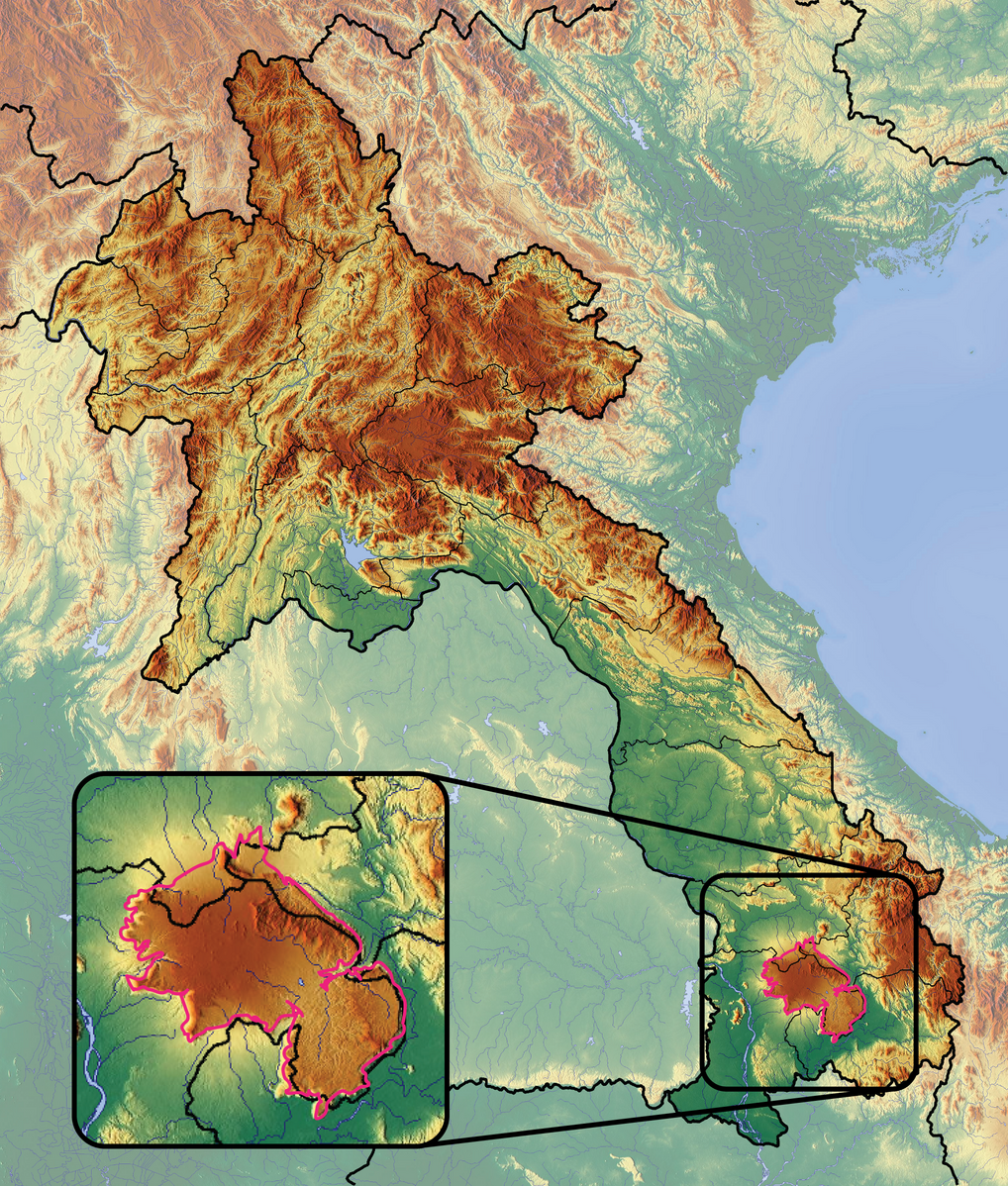
Bolaven Plateau Loop Laos
The Bolaven Plateau is located in southern Laos, spanning parts of Champasak, Salavan, Sekong, and Attapeu provinces. A map of the plateau highlights its elevated position between the Mekong River basin to the west and the Annamite Mountains to the east, which border Vietnam.
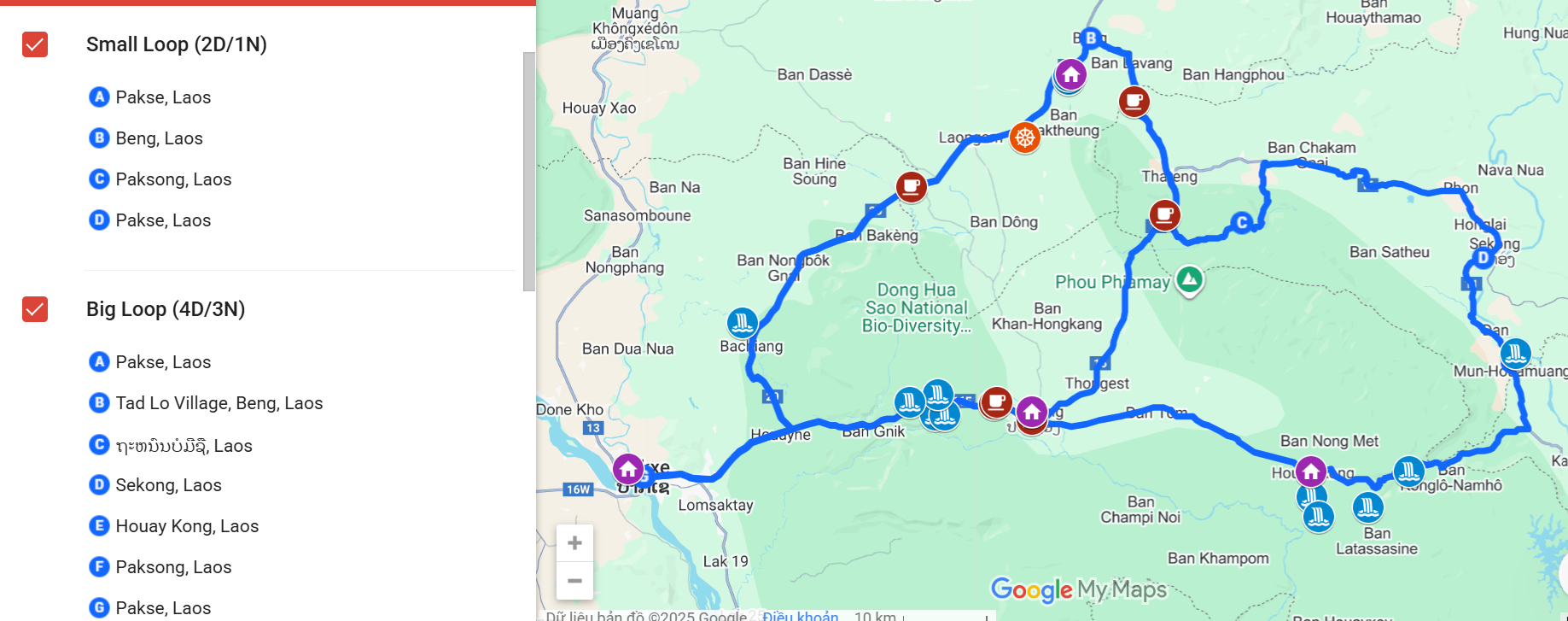
Bolaven Plateau map
The Bolaven Plateau Laos is one of Southeast Asia’s most underrated travel destinations, famous for its cool climate, lush coffee plantations, and breathtaking waterfalls. One of the best ways to explore this region is by motorbike along the Bolaven Plateau Loop.
There are two main route options for tourists to choose: the Small Loop and the Big Loop. Each offers a unique experience, so here’s a detailed guide to help you choose the one that fits your time, comfort level, and travel style.
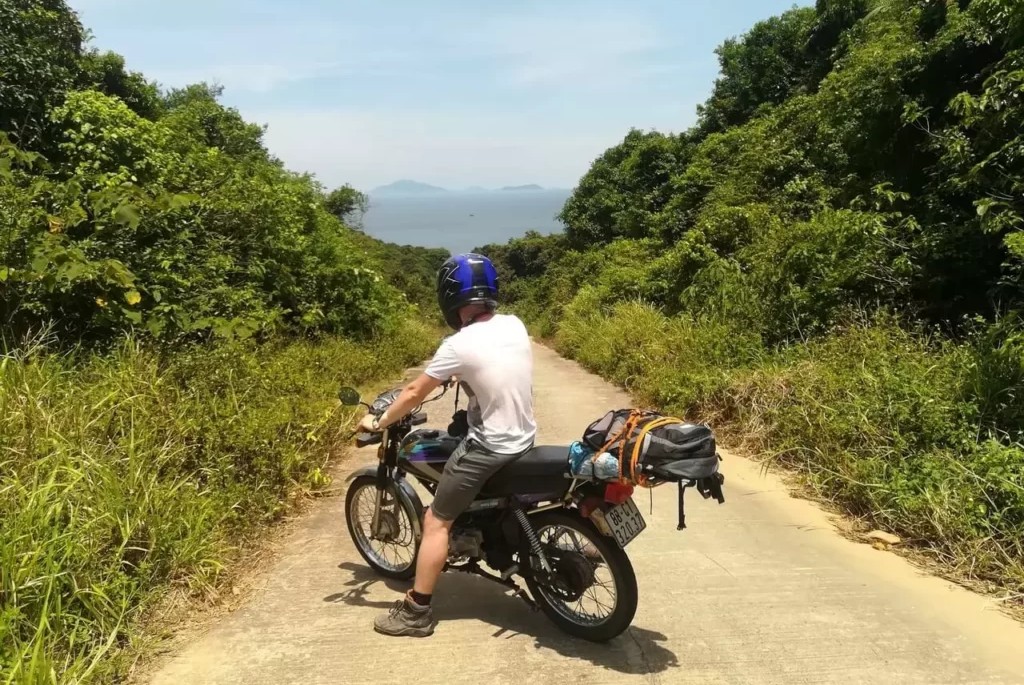
Bolaven Plateau Loop
Starting from Pakse, the capital of Champasak Province, the loop takes you deep into the highlands of the Bolaven Plateau. Along the way, you’ll pass world-class coffee plantations, towering waterfalls like Tad Fane and Tad Yuang, and remote ethnic minority villages where life has changed little over the decades.
The small loop is 120 to 150 kilometers. The Small Loop is ideal for travelers with limited time who still want to experience the highlights of the Bolaven Plateau.
Tourists choosing the small loop will have a lot of exciting experience like:
This loop is shorter and easier to ride, tourists still cover all the main interesting attractions and have more time for relaxing at each stop. However, It’s less exposure to the plateau’s more remote areas. So it’s ideal for casual riders, travelers on tight schedules, and those who want to focus on coffee and the most famous sights.
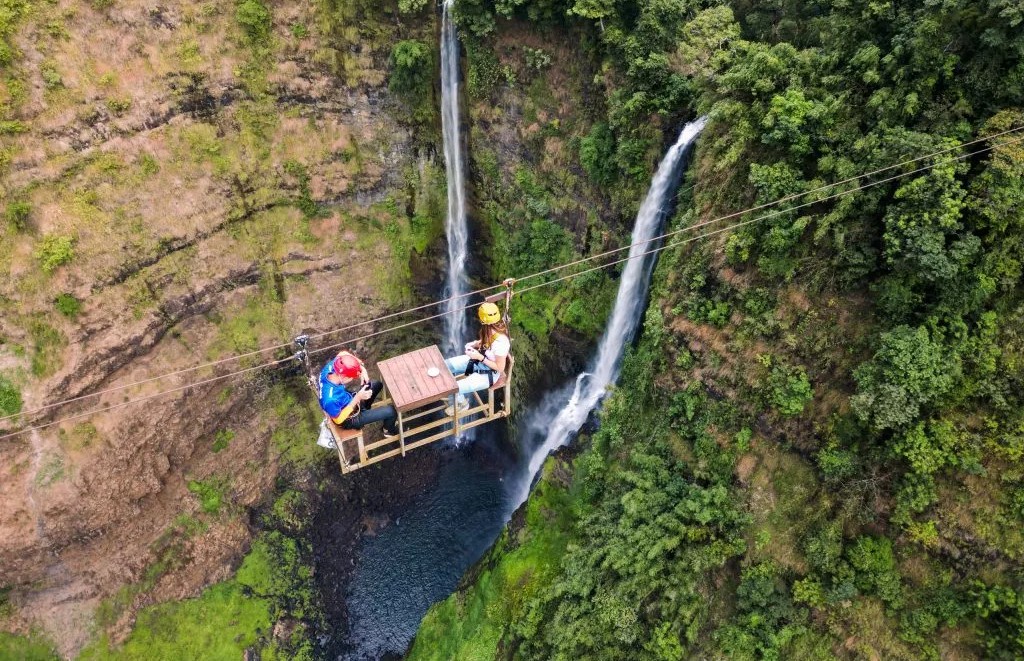
What is the Bolaven Plateau Loop?
The Big Loop is for adventurous travelers ready to go deeper into rural Laos. It includes all the attractions of the Small Loop plus remote villages, hidden waterfalls, and far fewer tourists. Moreover, it has others destination such as:
This big loop will make you impressed by the deep cultural immersion, authentic encounters and see more varied landscapes and photography opportunities. This loop há fewer crowds and so you can spend more time in nature. However, it requires more riding experience and endurance because some roads can be rough, especially in the rainy season. Therefore, it’s best for experienced riders, cultural explorers, and travelers with enough time to enjoy slow travel.
The scenery on the Bolaven Loop is rolling hills and agricultural valleys — a lot like Cambodia, not like most of Laos. You can either do the Short Loop (minimum 2 days, but you really need at least 3 and I enjoyed doing it in 4) or the Long Loop (minimum 3 days, but you really want 4 or 5).
From thundering twin falls to gentle natural swimming pools, here are four of the most beautiful Laos’ Bolaven Plateau waterfalls you should not miss.
Located in the heart of Dong Hua Sao National Protected Area, Tad Fane is surrounded by pristine jungle that adds to its mysterious charm. Tad Fane is the undisputed symbol of the Bolaven Plateau. Its two parallel streams plunge an impressive 120 meters into a deep gorge, creating a dramatic and awe-inspiring sight.
Visitors can admire the falls from a viewpoint or embark on trekking adventures through the surrounding rainforest. During the rainy season, the waterfall roars with full power, making it the perfect backdrop for breathtaking photographs.
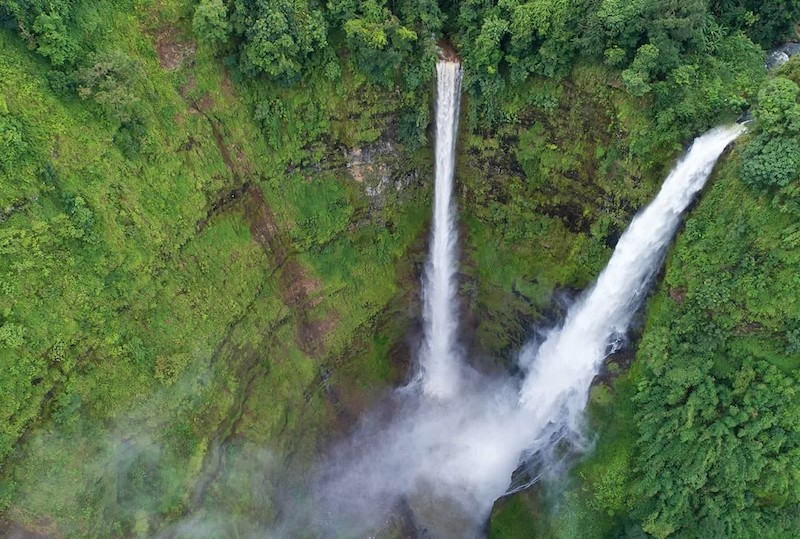
Tad Fane Waterfall – The Icon of the Bolaven Plateau Laos
Tad Yuang, a prominent waterfall on the Bolaven Plateau, plunges from a height of roughly 40 meters (131 feet). Just a short distance from Tad Fane lies Tad Yuang Waterfall, its graceful flow contrasting beautifully with Tad Fane’s wild power. This waterfall feels like a natural retreat, with cool swimming pools at its base and picnic-friendly surroundings.
It’s an ideal spot for camping, swimming, or simply relaxing to the sound of rushing water. A charming café sits nearby, allowing visitors to sip a hot cup of fresh Bolaven coffee while enjoying the refreshing breeze and soothing views.
Tad Lo Waterfall is a gorgeous cascade with a tranquil atmosphere and stunning natural beauty. Tad Lo isn’t just one waterfall, it’s actually a series of three smaller cascades: Tad Suong, Tad Lo, and Tad Hang. Three cascades create a peaceful and picturesque environment perfect for unwinding after a long journey.
Many travelers choose to stay in homestays near the falls, where they can wake up to birdsong and the gentle sound of flowing water. It’s a place where life moves slowly, and every moment feels calm and restorative.
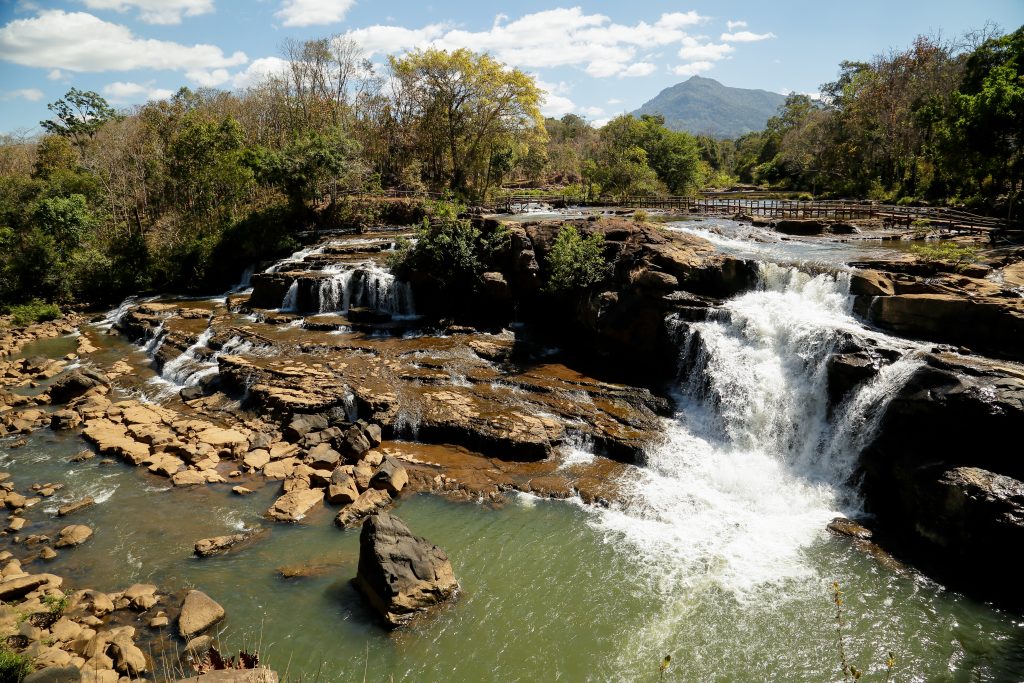
Tad Lo Waterfall – A Tranquil Triple Cascade
Nestled deep within the untouched wilderness of the Laos’ Bolaven Plateau, Tad Champee Waterfall is a serene escape for those seeking quiet beauty. The waterfall’s moderate drop leads into a large, crystal-clear pool, which is often compared to a “natural swimming pool” so it’s perfect for cooling off after tourists spend a lot of time exploring.
Surrounded by smooth boulders, shady trees, and the mirrored reflection of the sky, Tad Champee offers a peaceful atmosphere away from the crowds, which will make tourists feel relaxed and comfortable. In pảticular, you can relax on the rocks, swim in the cool waters, and truly feel connected to nature.
Tips for Visiting Bolaven Plateau Waterfalls
Best Time to Visit: June to October for the most powerful flows; November to March for easier access and cooler weather.

Tad Champee Waterfall – The Hidden Gem
The Bolaven Plateau owes its lush landscapes to its volcanic past. Ancient eruptions enriched the land with mineral-packed soils, creating the perfect conditions for coffee cultivation. Coffee trees in here sink their roots deep into this fertile earth, absorbing nutrients that give Bolaven coffee its signature vibrancy, smooth body, and natural sweetness.
While the plateau is famous for its coffee, it’s also home to tea plantations, most of which are family-run farms managed by local communities. Strolling through these plantations is more than just a scenic walk, it’s also a chance for tourists to connect with the region’s natural beauty, witness the coffee trees up close, and learn about the farming traditions passed down through generations.
The trip will not complete without tasting freshly brewed Lao coffee, made from beans grown right on the plantation. The rich aroma and distinctive flavor profile make every sip a sensory journey.
For coffee lovers and curious travelers alike, the plantations of the Bolaven Plateau are not just a stop on the itinerary. It’s a wonderful experience that blends culture, nature, and taste in every cup.
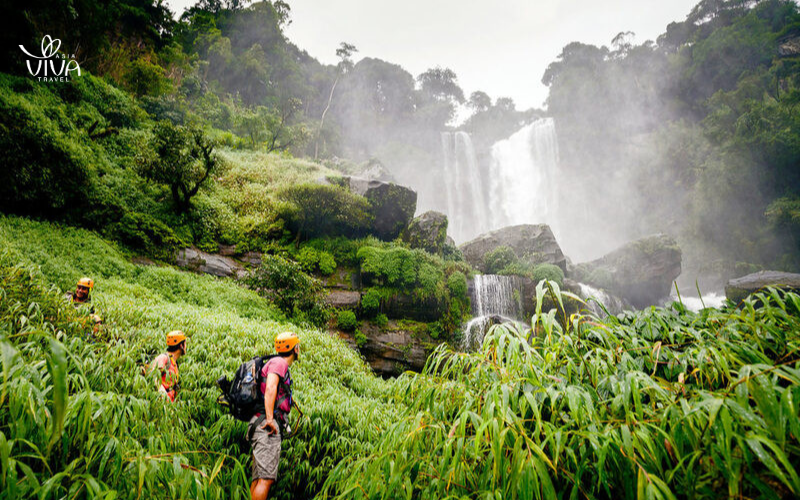
Bolaven Plateau – where coffee tells its story
Bolaven Plateau has lively local markets where everyday life unfolds in its most authentic form. These bustling hubs are where villagers come to trade fresh produce, handcrafted goods, and household essentials. Visitors can discover unique souvenirs that reflect the culture of southern Laos in these markets.
The markets are at their most vibrant in the early morning, as farmers and vendors arrive with the day’s freshest harvest. Beyond shopping, the markets are a food lover’s paradise. Stalls brim with traditional Lao dishes and snacks from steaming bowls of noodle soup and fragrant sticky rice to smoky grilled meats and sweet tropical fruit. Sampling these flavors is one of the best ways to connect with the region’s culinary heritage.
Whether you’re looking for a handwoven textile, a bag of locally grown coffee, or just a warm smile from a friendly vendor, the markets of the Bolaven Plateau offer a colorful window into local life and culture.
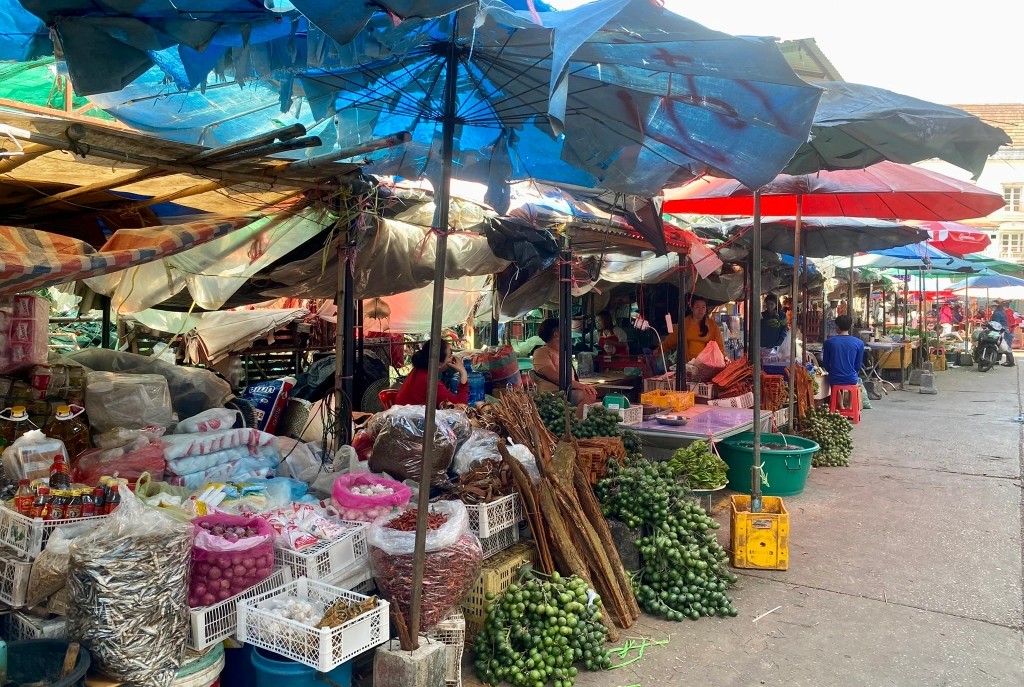
Bolaven-Plateau-Pakse-Laos
Carry Cash
ATMs are rare outside Pakse and larger towns. Keep enough cash for fuel, food, and accommodation in rural areas.
Plan Your Transportation
Pack Smart
Try the Coffee (and Tea)
Safety First
By following these tips, your trip to the Bolaven Plateau will be not only memorable but also smooth, safe, and respectful of the local way of life.
The Bolaven Plateau is more than just a stop in southern Laos, it’s an experience that lingers long after you leave. From the roar of its waterfalls to the aroma of freshly roasted coffee drifting through the highland air, every moment here feels authentic and unhurried
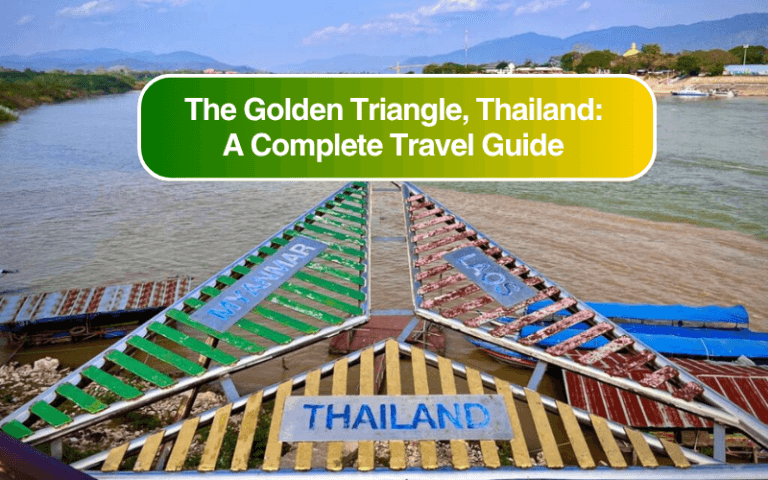
 19/11/2025
19/11/2025The Golden Triangle is one of the most legendary travel destinations in Southeast Asia, known for its history, stunning river landscapes, and multicultural influence

 08/10/2025
08/10/2025Discover Laos airports: 11 international & domestic hubs connecting travelers to Vientiane, Luang Prabang, Pakse, and nearby Southeast Asian countries.
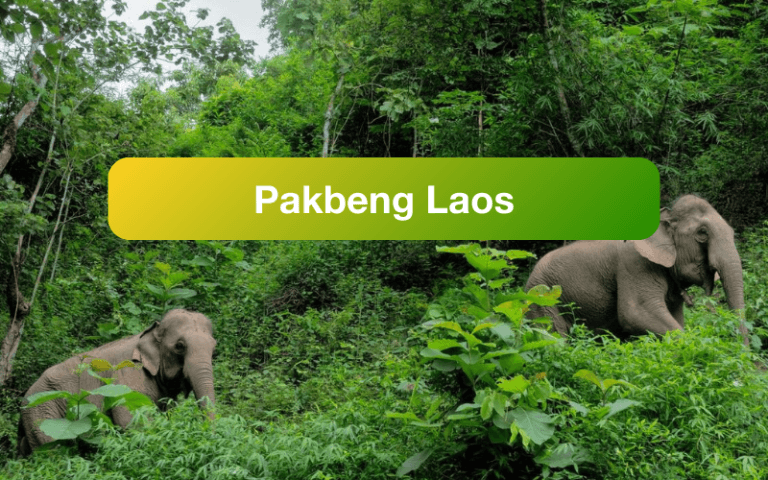
 23/08/2025
23/08/2025A true vagabond experience in the Pakbeng Laos river region, where the pace of life slows down on a slow boat trip, exploring peacefu villages and l landscapes
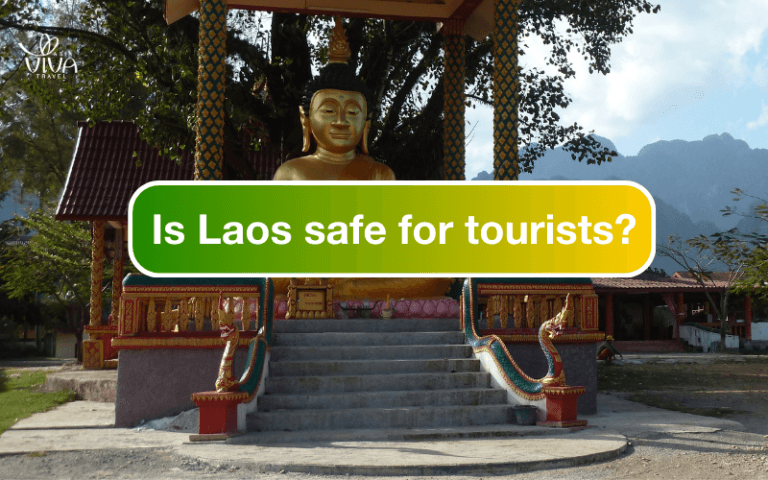
 11/08/2025
11/08/2025From peaceful temples to stunning nature, Laos safe to travel if travellers follow key safety tips. Don’t risk unexpected hassles, travel smart for a relaxing trip!